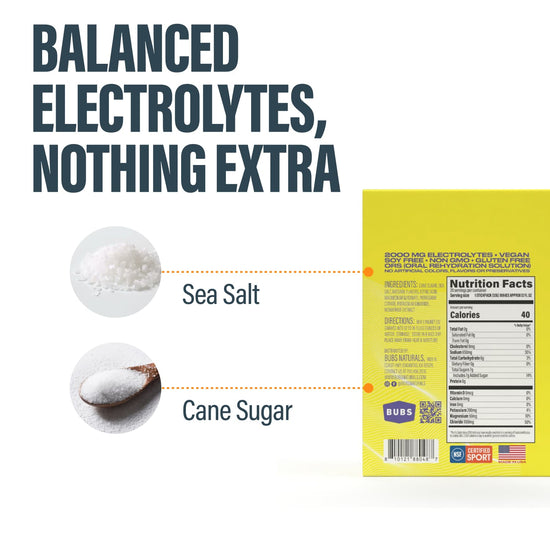Table of Contents
- Introduction
- What is Himalayan Salt?
- The Benefits of Himalayan Salt for Electrolyte Balance
- How to Incorporate Himalayan Salt into Your Diet
- Conclusion
- FAQ
When it comes to enhancing our health and wellness through natural sources, Himalayan salt has emerged as a popular choice. Its characteristic pink hue and mineral-rich profile draw us in, but one question continues to linger: does Himalayan salt have electrolytes? The answer is not just a simple yes or no; it involves delving into the composition of this unique salt and understanding the role of electrolytes in our bodies.
In this blog post, we will explore the mineral content of Himalayan salt, including its electrolyte profile, the benefits it offers for hydration and overall wellness, and how it compares to other salt options available on the market. We aim to provide you with a comprehensive understanding of how Himalayan salt can fit into a health-conscious lifestyle, particularly for those of us who are active and adventurous, just like Glen “BUB” Doherty, whose legacy inspires our commitment to wellness at BUBS Naturals.
Introduction
Did you know that electrolytes are essential minerals that carry an electric charge in our bodies? They play a crucial role in various bodily functions, including hydration, muscle contractions, and nerve impulses. With the growing popularity of Himalayan salt as a healthier alternative to table salt, many people wonder if it can serve as a natural source of electrolytes.
Historically, Himalayan salt has been mined from the Khewra Salt Mine in Pakistan and is renowned for its distinct color and purported health benefits. The salt contains various minerals that contribute to its unique flavor and potential health benefits, but how does it stack up in terms of electrolytes?
In this article, we will cover:
- What Himalayan salt is and how it’s sourced.
- The composition of Himalayan salt, focusing on its electrolyte content.
- The benefits of using Himalayan salt for hydration and wellness.
- Practical ways to incorporate Himalayan salt into your daily routine.
By the end of this post, you will have a deeper insight into the relationship between Himalayan salt and electrolytes, as well as how it can support your active lifestyle. Let's dive in!
What is Himalayan Salt?
Himalayan salt is a type of rock salt that is primarily harvested from the Khewra Salt Mine in Pakistan, nestled near the foothills of the Himalayas. This natural salt is considered one of the purest salts available and is often touted for its numerous health benefits.
Composition of Himalayan Salt
Himalayan salt is composed of approximately 98% sodium chloride, similar to regular table salt. However, what sets it apart is its unique mineral content. It contains over 80 trace minerals, including potassium, magnesium, and calcium, which contribute to its characteristic pink color. These trace minerals not only enhance the flavor of the salt but also provide potential health benefits.
The Electrolyte Content in Himalayan Salt
Electrolytes are minerals that, when dissolved in water, carry an electric charge, playing key roles in bodily functions. The primary electrolytes found in Himalayan salt include:
- Sodium: Essential for maintaining fluid balance and supporting nerve function.
- Potassium: Important for muscle contractions and overall cellular function.
- Calcium: Crucial for bone health and nerve signaling.
- Magnesium: Supports muscle function and is involved in over 300 enzymatic reactions in the body.
While the exact electrolyte content can vary based on the source and processing of the salt, Himalayan salt generally contains these essential electrolytes in meaningful amounts.
The Benefits of Himalayan Salt for Electrolyte Balance
Incorporating Himalayan salt into our diets can offer several potential benefits, particularly for hydration and overall wellness. Here are some of the key advantages:
Supports Hydration
Electrolytes play a critical role in regulating fluid balance in the body. Sodium, in particular, helps retain water, ensuring that our cells and tissues stay hydrated. By using Himalayan salt as a seasoning or in cooking, we can naturally enhance our electrolyte intake and support proper hydration levels.
Aids Muscle Function
For those of us leading active lifestyles, maintaining electrolyte balance is essential for optimal muscle function. Sodium and potassium work together to facilitate muscle contractions, making Himalayan salt a valuable addition to our diets, especially after exercise or physical activity.
Enhances Nerve Transmission
Electrolytes also play a vital role in transmitting nerve impulses. Calcium and magnesium are particularly important for this function, allowing for proper communication between the brain and muscles. By consuming Himalayan salt, we can help support healthy nerve function and promote overall well-being.
Natural Source of Minerals
Unlike refined table salt, which often contains anti-caking agents and additives, Himalayan salt is less processed and retains its natural mineral content. This makes it a more wholesome option for those looking to enhance their diets with natural ingredients.
How to Incorporate Himalayan Salt into Your Diet
Incorporating Himalayan salt into our daily routines can be both simple and enjoyable. Here are some practical ways to use this mineral-rich salt:
-
Cooking and Seasoning: Use Himalayan salt in place of regular salt when cooking or seasoning your meals. It can enhance the flavor of dishes while providing essential minerals.
-
Salt Water: Create a natural electrolyte drink by mixing Himalayan salt with water. This can be particularly beneficial after intense workouts or on hot days.
-
Bath Soaks: Adding Himalayan salt to your bath can provide a relaxing experience while allowing your skin to absorb some of its minerals.
-
Culinary Creations: Use Himalayan salt blocks for grilling or serving dishes. This not only adds flavor but also provides a unique and visually appealing presentation.
At BUBS Naturals, we believe in supporting active lifestyles with clean, high-quality ingredients. Incorporating Himalayan salt into our daily routines aligns with our no-BS approach to wellness—simple, effective, and natural.
Conclusion
In conclusion, Himalayan salt does indeed contain electrolytes, making it a natural source of these essential minerals. With its unique composition of sodium, potassium, calcium, and magnesium, Himalayan salt can support hydration, muscle function, and overall electrolyte balance in our bodies.
As we navigate our wellness journeys, it is important to remember that while Himalayan salt can be a beneficial addition to our diets, it should be consumed in moderation, just like any other salt. Whether we are seasoned athletes or weekend warriors, incorporating Himalayan salt can enhance our hydration efforts and overall health.
At BUBS Naturals, we are committed to providing clean, functional, science-backed supplements that support your active lifestyle. Explore our Hydration collection to discover how we can help you stay hydrated and energized.
FAQ
Q: Does Himalayan salt have a higher mineral content than regular salt?
A: Yes, Himalayan salt contains a variety of trace minerals that contribute to its unique flavor and color, while regular table salt is primarily composed of sodium chloride and may contain additives.
Q: Can Himalayan salt help with dehydration?
A: While Himalayan salt can help maintain electrolyte balance, it should be used in moderation as part of a balanced diet. Adequate hydration also requires consuming sufficient fluids.
Q: How can I use Himalayan salt in my cooking?
A: Himalayan salt can be used in cooking and seasoning, as well as in salt blocks for grilling. It can also be mixed with water to create a natural electrolyte drink.
Q: Is Himalayan salt better for my health than regular salt?
A: While Himalayan salt offers trace minerals that may enhance its flavor and provide some health benefits, both Himalayan and regular salt should be consumed in moderation. The choice often comes down to personal preference.
Q: What are the potential risks of consuming too much salt?
A: Excessive salt intake can lead to health issues such as high blood pressure, heart disease, and kidney problems. It's important to monitor salt consumption and consult with a healthcare professional if needed.
Written by:
Bubs Naturals

Hydrate or Die
When you’re sweating hard—whether it’s from a tough workout, a long day in the sun, or just life—your body needs more than water to stay balanced and energized.
Hydrate or Die® delivers 2,000 mg of electrolytes in every serving to help you rehydrate faster, fight off fatigue, and keep going strong. That includes the right mix of sodium, potassium, and magnesium to support muscle function, prevent cramps, and maintain energy levels.
With a small dose of natural cane sugar to speed up absorption, this clean, easy-to-use powder is made for real performance—not just flavor.
Starts at $29.60
Shop

